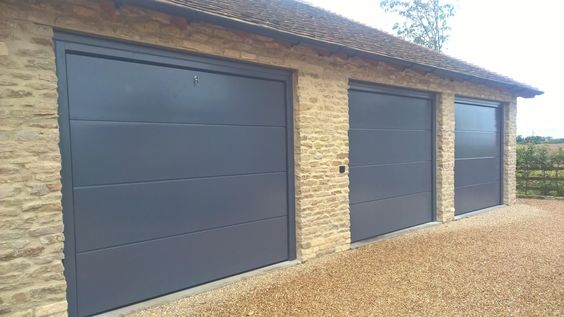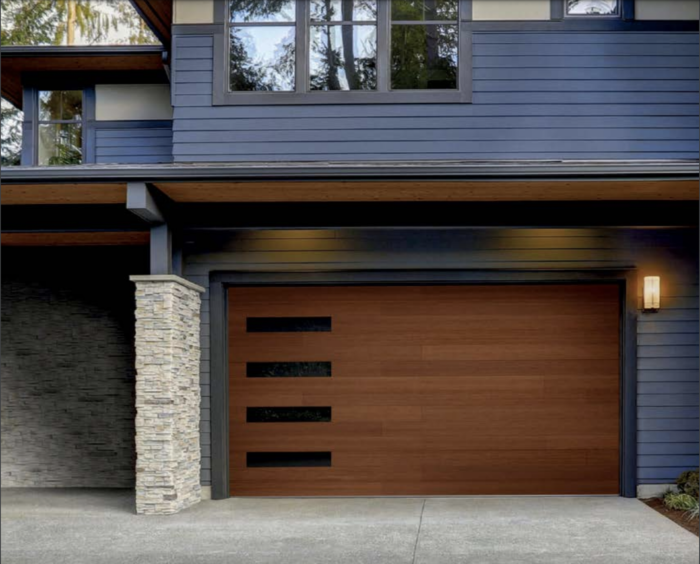As a homeowner, I’ve encountered my fair share of unexpected repair projects, and one that caught me by surprise was dealing with a damaged garage door panel. The garage door, often overlooked, plays a crucial role in the aesthetics and security of a home. A damaged panel can be an eyesore, compromise the garage’s insulation, and even affect the overall structural integrity of the door.

In reference to First Call Garage Door of Missouri City, I’ll share my first-hand experience and insights into whether repairing a garage door panel is worth the effort, or if it’s better to opt for a full replacement.
The Unfortunate Reality of Garage Door Damage
Garage doors, despite their sturdy construction, are vulnerable to various forms of damage over time. Common causes of garage door panel damage include:
- Accidental Impact: Bumping into the door with a car, bike, or even a lawnmower can cause dents or cracks.
- Weather Exposure: Exposure to extreme weather conditions, such as hail, heavy rain, or harsh sunlight, can lead to panel deterioration.
- Aging: With age, garage door panels can become weak and susceptible to damage, including warping and rusting.
- Pest Infestation: Insects and rodents can damage garage door panels, particularly if there are gaps or weaknesses in the material.
- Vandalism: Deliberate acts of vandalism can result in severe panel damage that may need immediate attention.
Now, let’s explore the options for dealing with a damaged garage door panel:
Option 1: Repairing the Damaged Panel
Repairing a damaged garage door panel can be a cost-effective solution if the damage is relatively minor and limited to a single panel. Here’s what you need to consider:
- Assessment: Begin by assessing the extent of the damage. Is it a minor dent, a crack, or something more severe? Small dents and minor scratches can often be repaired without replacing the entire panel.
- Dent Repair: If the panel has a dent, consider using a plunger to gently suction the dent outward. For minor dents, this can be an effective DIY fix.
- Crack Repair: Small cracks can be filled with epoxy or a suitable filler material. After the filler dries, sand it down and repaint the panel to match the door’s color.
- Panel Reinforcement: Depending on the type of damage, reinforcing the damaged area with additional braces or supports may prevent further deterioration.
- Professional Help: For more extensive damage or if you’re not comfortable with DIY repairs, consider hiring a professional garage door technician. They have the experience and tools to assess the damage accurately and recommend the best course of action.
- Aesthetic Consideration: Keep in mind that repairs may not always restore the panel’s original appearance perfectly. There might be visible signs of the repair, which could affect the door’s overall look.
Option 2: Replacing the Damaged Panel
Replacing the damaged panel is a more comprehensive solution and may be necessary for severe or widespread damage. Here are the key factors to consider:
- Matching Panels: One of the challenges in replacing a single panel is finding an exact match. Garage door panels come in various styles, materials, and colors, and finding the same panel might be difficult, especially if your door is older.
- Professional Installation: Replacing a garage door panel is a complex task best left to professionals. It involves disassembling parts of the door, removing the damaged panel, and installing a new one. An expert technician can ensure that the replacement is done correctly and safely.
- Cost: Replacing a single panel can be relatively expensive, especially when you factor in the cost of the new panel and the labor involved. In some cases, the cost of replacing a panel may be close to the cost of a new garage door.
- Aesthetics: When replacing a single panel, there may be a noticeable difference in appearance between the new and existing panels, particularly if the door’s paint or finish has faded over time.
- Age of the Door: If your garage door is relatively old and has already experienced panel damage, it might be worth considering whether it’s time for a full garage door replacement instead of just addressing a single panel.
Option 3: Full Garage Door Replacement
In some situations, a damaged panel may be a sign of more significant problems with the garage door. If your garage door is old, experiencing multiple panel issues, or simply showing signs of age, it might be worth considering a full garage door replacement. Here are the advantages:
- Aesthetics: A new garage door can significantly enhance the curb appeal of your home. You have the option to choose a style and color that complements your house’s architecture.
- Improved Insulation: Older garage doors may lack proper insulation, leading to energy inefficiency. Newer doors often come with better insulation options to keep your garage and home more comfortable.
- Enhanced Security: Modern garage doors often include advanced security features that provide better protection for your home.
- Quieter Operation: New garage door openers and systems are designed for quieter operation, reducing noise when the door opens and closes.
- Warranty: New garage doors typically come with warranties that offer peace of mind and protection against defects or issues.
Conclusion: Making the Right Choice
The decision to repair a damaged garage door panel or opt for a full replacement depends on several factors. Here are some guidelines to help you make the right choice:
- Extent of Damage: Assess the extent of the damage. Minor dents and scratches may be repairable, while extensive damage may necessitate replacement.
- Age of the Door: Consider the age of your garage door. If it’s old and showing signs of wear, a full replacement may be a more sensible long-term investment.
- Matching Panels: Determine if you can find an exact match for the damaged panel. If not, the aesthetic difference might be a concern.
- Budget: Factor in your budget. Repairing a single panel is usually more cost-effective than replacing the entire door, but it may not be the best choice for extensive damage or an aging door.
- Professional Consultation: When in doubt, consult a professional garage door technician. They can assess the damage, provide expert advice, and offer cost estimates for both repair and replacement.
In my case, by following First Call Garage Door of Missouri City and I opted to repair a minor dent in my garage door panel. It was a simple fix that restored the door’s appearance and function. However, for more extensive damage or if your garage door is nearing the end of its lifespan, a full replacement might be the better investment. Ultimately, the decision should align with your budget, aesthetic preferences, and long-term goals for your home.
First Call Garage Door of Missouri City
1718 Crescent Oak Dr, Missouri City, TX 77459, United States
281-595-8036


